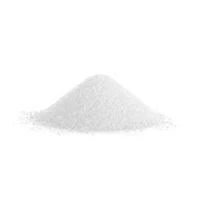
color additives in food
Understanding Color Additives in Food
Color additives play a significant role in the food industry, enhancing the visual appeal of products and influencing consumer behavior. From vibrant candies to rich sauces, color has the power to attract attention, evoke emotions, and enhance flavor perception. This article delves into the types, regulations, and implications of color additives in food.
What Are Color Additives?
Color additives, also known as food coloring or colorants, are substances added to food and beverages to impart color. They can be derived from natural sources or synthesized in laboratories. Natural color additives come from plant, animal, or mineral sources, while synthetic color additives are chemically manufactured.
Natural color additives include beet juice for red hues, turmeric for yellow, and spirulina for blue-green
. On the other hand, synthetic color additives, such as Red 40 and Yellow 5, are widely used due to their vibrant colors and stability.Types of Color Additives
The Food and Drug Administration (FDA) categorizes color additives into two primary types certified and non-certified.
1. Certified Color Additives These are synthetic colorings that are approved by the FDA and are subject to rigorous testing. They carry a specific identification number, such as FD&C Red No. 40. These dyes are used in various products, including candies, beverages, and baked goods.
2. Non-Certified Color Additives These include natural colorings that are derived from plant or animal sources and do not require certification by the FDA. While these additives are considered safer by some consumers, they can vary in intensity and may not provide the same vibrancy as synthetic options.
Regulation and Safety
color additives in food

The regulation of color additives is crucial to ensure public safety. In the United States, the FDA oversees the approval process for color additives, requiring extensive testing to evaluate their safety for consumption. This includes studies on potential toxicity, allergic reactions, and long-term health effects.
In addition to FDA regulations, other countries have their own governing bodies that monitor the use of color additives. The European Food Safety Authority (EFSA), for example, has stringent guidelines and regulations regarding food colorings, including the requirement for safety assessments before approval.
Despite rigorous testing, concerns have been raised about certain synthetic color additives. Some studies have suggested a potential link between artificial colorings and hyperactivity in children, leading to calls for bans or restrictions. As a result, many manufacturers are shifting towards natural color additives to respond to consumer demand for cleaner labels and healthier options.
Implications of Color Additives
The use of color additives goes beyond aesthetic appeal; it also influences taste perception. Research shows that people often associate certain colors with specific flavors—red with strawberry, yellow with banana, and green with apple. This association can significantly impact purchasing decisions, as consumers are often drawn to products that appear appealing and familiar.
Furthermore, color additives can also enhance the perception of freshness and quality. Freshly cut fruits and vegetables, for instance, often have brighter colors than their processed counterparts. When manufacturers reintroduce color to food products, they create an illusion of freshness that can make their products more marketable.
However, while color additives enhance visual appeal, there is an ongoing debate regarding their necessity. Some food advocates argue that food should be left in its natural state without the manipulation of color. The challenge lies in balancing consumer tastes and marketing strategies with health concerns and natural food production practices.
Conclusion
Color additives have become a staple in the food industry, serving not only to beautify products but also to influence consumer behavior and taste perceptions. While regulated and tested for safety, their usage raises questions about health implications and the desire for more natural food options. As consumer awareness grows, the food industry is likely to evolve, reflecting a shift toward transparency and the reduction of synthetic additives. Ultimately, understanding color additives' role in our food can help consumers make informed choices that align with their values and health goals.
-
Pure Sodium Dichloroisocyanurate Dihydrate | Powerful DisinfectantNewsAug.29,2025
-
Industrial Chemicals: Quality & Purity for Every IndustryNewsAug.28,2025
-
Nitrile Rubber Honoring Strict Production StandardsNewsAug.22,2025
-
Aspartame Ingredients Honoring Food Safety ValuesNewsAug.22,2025
-
Fertilizer for Balanced Plant NutritionNewsAug.22,2025
-
Cyanide Gold Processing with High Purity AdditivesNewsAug.22,2025
-
Formic Acid in Textile Dyeing ApplicationsNewsAug.22,2025
Hebei Tenger Chemical Technology Co., Ltd. focuses on the chemical industry and is committed to the export service of chemical raw materials.
-

view more DiethanolisopropanolamineIn the ever-growing field of chemical solutions, diethanolisopropanolamine (DEIPA) stands out as a versatile and important compound. Due to its unique chemical structure and properties, DEIPA is of interest to various industries including construction, personal care, and agriculture. -

view more TriisopropanolamineTriisopropanolamine (TIPA) alkanol amine substance, is a kind of alcohol amine compound with amino and alcohol hydroxyl, and because of its molecules contains both amino and hydroxyl. -

view more Tetramethyl Thiuram DisulfideTetramethyl thiuram disulfide, also known as TMTD, is a white to light-yellow powder with a distinct sulfur-like odor. It is soluble in organic solvents such as benzene, acetone, and ethyl acetate, making it highly versatile for use in different formulations. TMTD is known for its excellent vulcanization acceleration properties, which makes it a key ingredient in the production of rubber products. Additionally, it acts as an effective fungicide and bactericide, making it valuable in agricultural applications. Its high purity and stability ensure consistent performance, making it a preferred choice for manufacturers across various industries.





